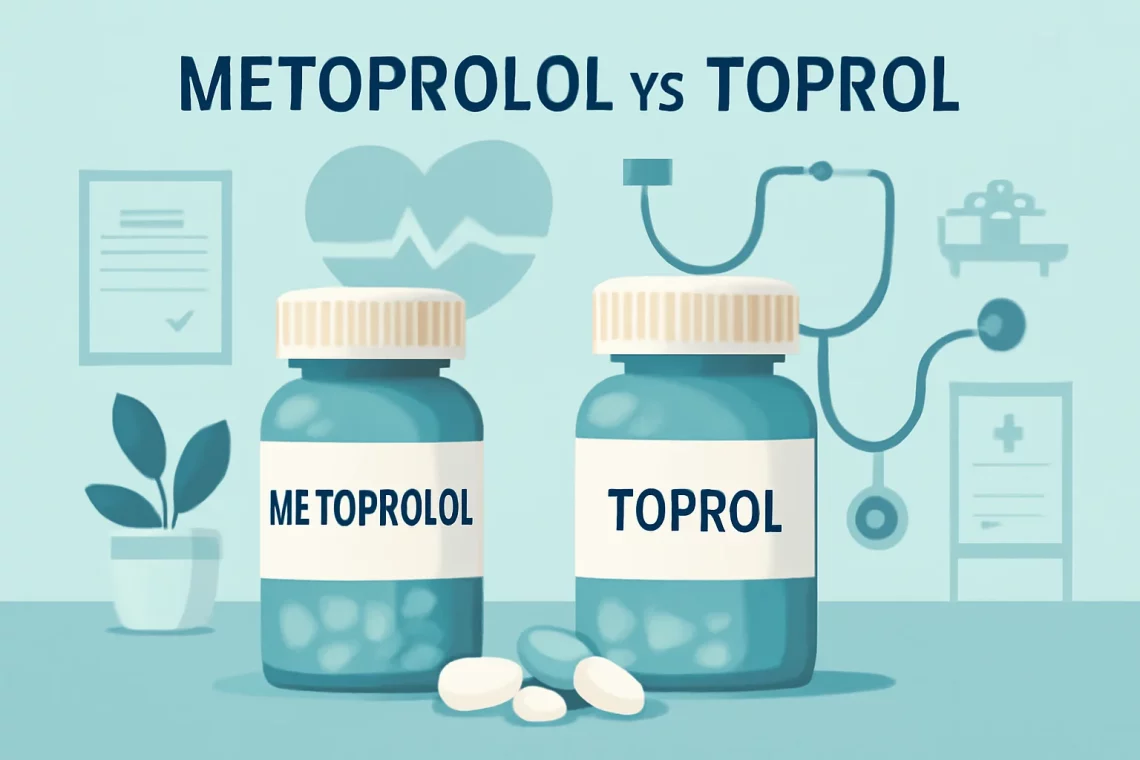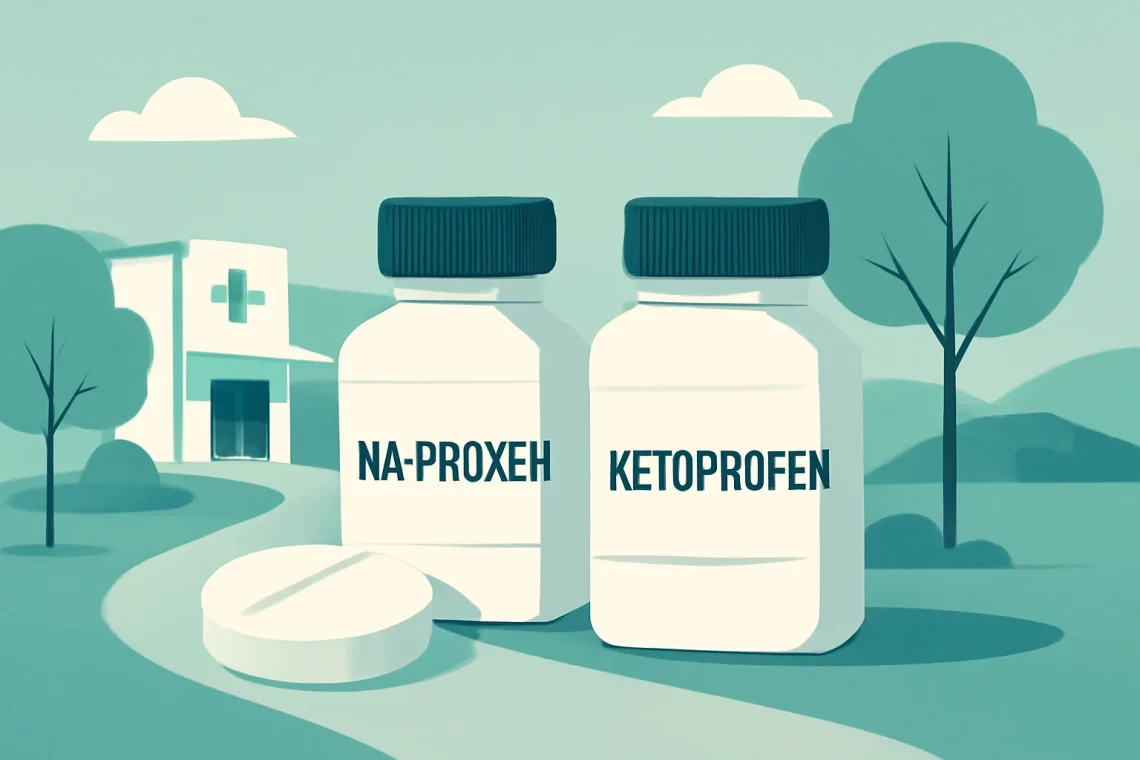-
Buspirone vs Hydroxyzine: Which Anxiety Medication is Right for You?
In the realm of mental health and anxiety management, medication plays a crucial role for many individuals seeking relief from their symptoms. Among the various options available, Buspirone and Hydroxyzine are two medications often discussed for their effectiveness in treating anxiety-related conditions. While both belong to the broader category of anxiolytics, they differ significantly in their mechanisms of action, side effects, and overall use cases. Understanding these differences is vital for anyone considering treatment options for anxiety or related disorders. Both medications offer unique benefits and potential drawbacks, making it essential for individuals to evaluate their personal health needs and consult with healthcare professionals. The choice between Buspirone and Hydroxyzine…
-
Metoprolol vs Toprol: Understanding the Key Differences and Uses
Metoprolol and Toprol are two terms often used interchangeably in the world of cardiovascular medications. These medications belong to a class known as beta-blockers, which are primarily used to manage high blood pressure, heart rhythm disorders, and other heart-related conditions. Despite their similarities, it is crucial to understand that Metoprolol and Toprol, while closely related, are not exactly the same. Their differences can significantly impact how they are prescribed and how they function in the body. Beta-blockers like Metoprolol work by blocking the effects of adrenaline on the heart and blood vessels. This action leads to a decrease in heart rate and blood pressure, making it easier for the heart…
-
Meloxicam vs Indomethacin: Which Anti-Inflammatory is Better?
Meloxicam and indomethacin are both nonsteroidal anti-inflammatory drugs (NSAIDs) commonly used to relieve pain, reduce inflammation, and enhance mobility in individuals suffering from various conditions such as arthritis, osteoarthritis, and other musculoskeletal disorders. They belong to a class of medications known for their effectiveness in treating pain and inflammation by inhibiting specific enzymes that contribute to the production of inflammatory substances in the body. While both medications are effective in managing symptoms, they possess distinct characteristics, mechanisms of action, and potential side effects that can influence a healthcare provider’s choice in prescribing them. Understanding the differences and similarities between meloxicam and indomethacin is crucial for patients and healthcare professionals alike.…
-
Tramadol vs Hydrocodone: Key Differences and Similarities Explained
The use of prescription medications for pain management has become increasingly common in recent years. Among these medications, Tramadol and Hydrocodone are two widely prescribed options that serve as effective analgesics. Both drugs belong to the class of opioids, but they have different mechanisms of action, side effects, and potential for addiction. As pain management continues to evolve, understanding the differences and similarities between these two medications is crucial for patients, healthcare providers, and caregivers. Tramadol is a synthetic opioid that works by binding to the brain’s pain receptors, while also inhibiting the reuptake of neurotransmitters like serotonin and norepinephrine. This dual mechanism allows Tramadol to provide relief from moderate…
-
Xanax vs Valium: Understanding the Differences and Uses
The use of benzodiazepines has become increasingly prevalent in modern medicine, particularly for the treatment of anxiety and panic disorders. Two of the most commonly prescribed medications in this category are Xanax and Valium. Both of these drugs are known for their effectiveness in alleviating symptoms of anxiety, but they possess unique properties that set them apart. As the understanding of mental health continues to evolve, it is essential to examine these medications closely to determine which may be more appropriate for various conditions. In the realm of mental health treatment, the importance of medication cannot be overstated. Patients often seek relief from overwhelming feelings of anxiety, panic, or stress,…
-
Loratadine vs Fexofenadine: Which Antihistamine is Right for You?
Allergies are a common concern for many individuals, affecting millions worldwide. As the seasons change, pollen and other allergens become prevalent, leading to a surge in allergic reactions. Symptoms such as sneezing, nasal congestion, and itchy eyes can significantly impact daily life. To combat these discomforts, various antihistamines are available, each with its unique properties and effectiveness. Among the most popular options are loratadine and fexofenadine, both of which are second-generation antihistamines. These medications are designed to alleviate allergy symptoms without causing excessive drowsiness, a common side effect associated with first-generation antihistamines. Understanding the differences between loratadine and fexofenadine is essential for individuals seeking relief from allergies. While both medications…
-
Cyclobenzaprine vs Zanaflex: Understanding Their Differences and Uses
Cyclobenzaprine and Zanaflex are two medications commonly prescribed for muscle relaxation and pain relief. As muscle relaxants, they serve to alleviate discomfort associated with muscle spasms and musculoskeletal conditions. While both medications share a similar purpose, their mechanisms of action, side effects, and use cases can differ significantly. Understanding these differences is crucial for both patients and healthcare providers to make informed decisions regarding treatment options. In a landscape where pain management is paramount, the choice between Cyclobenzaprine and Zanaflex can be pivotal in achieving effective relief and improving patients’ quality of life. This article delves into the nuances of these two medications, exploring their distinct characteristics, benefits, and potential…
-
Naproxen vs Ketoprofen: Comparing Pain Relief Options for Your Needs
Naproxen and ketoprofen are both nonsteroidal anti-inflammatory drugs (NSAIDs) that are commonly used to relieve pain and reduce inflammation. These medications are widely prescribed and can be found over-the-counter, making them accessible to a large population seeking relief from various conditions. Despite their similarities, naproxen and ketoprofen have distinct characteristics that may make one more suitable than the other depending on the specific needs of the patient. Understanding the pharmacological differences, potential side effects, and appropriate usage of these medications is crucial for both healthcare providers and patients. Inflammation and pain can arise from numerous sources, including arthritis, muscle strains, and other musculoskeletal issues. In these instances, choosing the right…
-
Lyrica vs Gabapentin: Which Medication Is Right for You?
The discussion surrounding medications for neuropathic pain and seizures often leads to a comparison between Lyrica and Gabapentin. Both drugs are anticonvulsants and are widely prescribed for similar conditions, yet they differ in various aspects, including their chemical makeup, efficacy, side effects, and overall patient experience. Neuropathic pain, often characterized by a burning or shooting sensation, can arise from various underlying conditions, such as diabetes, shingles, or nerve injuries. These sensations can severely impact the quality of life, prompting healthcare professionals to seek effective treatments. Lyrica, known generically as pregabalin, and Gabapentin, often referred to by its brand name Neurontin, are two popular choices in the realm of pain management.…
-
Ibuprofen vs Motrin: Understanding Their Differences and Uses
Ibuprofen and Motrin are two widely recognized names in the realm of pain relief and anti-inflammatory medications. Both are often used to alleviate discomfort associated with various conditions, including headaches, muscle aches, arthritis, and even menstrual cramps. Their popularity stems from their effectiveness and the ease of accessibility in pharmacies and over-the-counter settings. Despite their common usage, many people may be unaware of the subtle distinctions between ibuprofen and Motrin. While they are often thought to be interchangeable, understanding their differences and similarities can be crucial for choosing the right medication for specific needs. The active ingredient in both ibuprofen and Motrin is the same, but the branding, formulations, and…






































